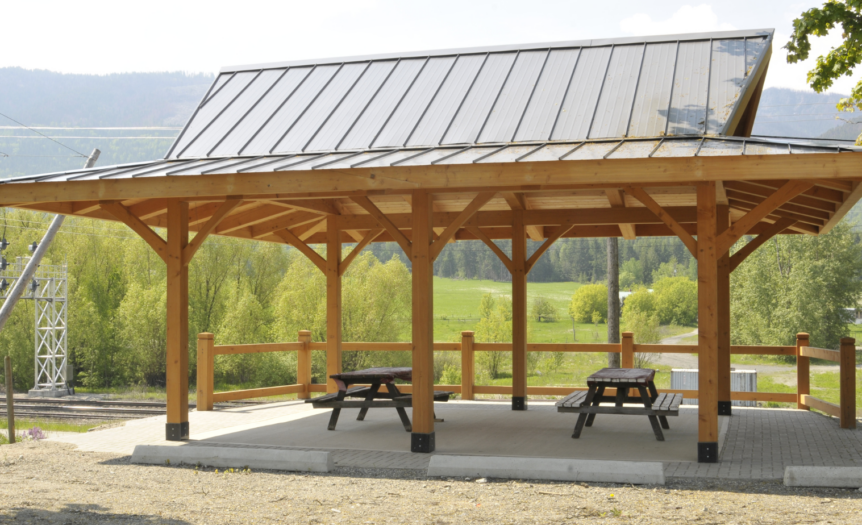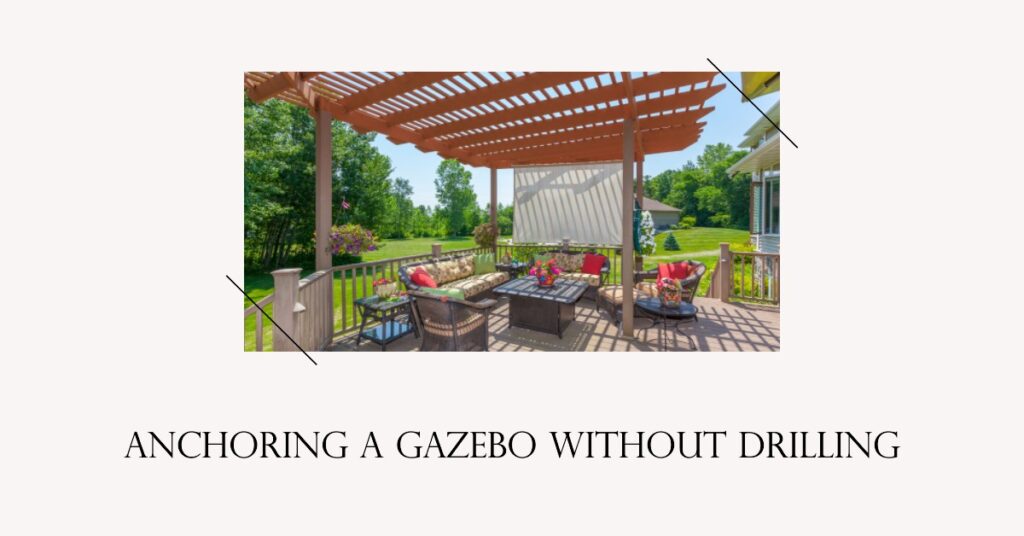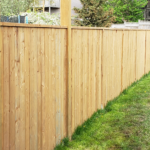Anchoring your gazebo securely is essential for both safety and stability, especially when facing unpredictable weather conditions. But what if you want to avoid drilling holes that could damage your lawn, landscaping, or the gazebo itself?
Good news – there are several effective methods available that don’t require any drilling! In this blog post, we’ll explore the best alternatives to anchor your gazebo without putting a single hole in the ground or using invasive techniques.
Why Avoid Drilling Anchors For Your Gazebo?
Drilling anchors can damage your lawn and landscaping, limit the portability of your gazebo, and cause potential harm to the gazebo or property.
Protecting Your Lawn And Landscaping
Protecting your lawn and landscaping is essential for maintaining the beauty and value of your property. By anchoring a gazebo without drilling, you can preserve the integrity of your outdoor space while enjoying its functionality.
One great example of protecting your lawn is by using weight bags filled with sand or stones. These durable bags act as an effective anchor without piercing the ground beneath them.
Simply distribute these weighted bags around your gazebo’s legs for optimal stability. Alternatively, you might consider placing heavy planters around the perimeter of your gazebo to serve dual purposes – providing both an aesthetic appeal and functional support to keep it from shifting during winds or storms.
Keeping Your Gazebo Portable
One of the benefits of having a gazebo is that it can be moved around your garden or backyard, allowing for flexibility in how you use your outdoor space. When anchoring your gazebo without drilling, it’s important to choose a method that still allows for portability.
One option is using leg weights filled with sand or water, which can add stability without compromising on the ability to move the structure as needed. Another option is using canopy tent weights or weighted planters placed around the base of the gazebo.
Avoiding Damage To The Gazebo Or Property
Drilling anchors into your lawn or patio can cause lasting damage to the surrounding property, as well as potentially damaging the gazebo itself. Using alternative anchoring methods like leg weights, sandbags, or stake anchors can help protect your property and keep your gazebo secure.
For example, using weighted planters around the perimeter of your gazebo not only anchors it in place but also adds a decorative touch to your outdoor space. Similarly, using grass anchors can provide a natural and eco-friendly way to keep your gazebo stable without causing any harm to the environment.
Alternative Ways To Anchor Your Gazebo Without Drilling
When it comes to anchoring your gazebo without drilling, there are several alternative methods that you can use, such as using weights or sandbags, securing with ropes or straps, using stake anchors, screw-in anchors or even canopy tent weights.
Using Weights Or Sandbags
Weights or sandbags are an excellent option to anchor a gazebo without drilling. These can be placed on the legs of the structure, providing stability and preventing it from tipping over.
For instance, if you have a pop-up gazebo that needs anchoring but does not require permanent fixtures, leg weights can be ideal.
Additionally, sandbags offer another non-drilling method for anchoring your outdoor shelter. You can use them by placing them at strategic points around the base to provide support against gusts of wind or other unexpected forces.
An advantage of using sandbags is that they are portable so you do not need to worry about leaving them behind when moving locations or packing up after an event.
Securing With Ropes Or Straps
Another option to anchor your gazebo without drilling involves securing it with ropes or straps. This works best for pop-up gazebos that have an open side design and can be pegged into the ground.
First, make sure the gazebo is situated on a flat surface to ensure stability. Then attach ropes or straps to each corner of the gazebo frame and secure them tightly to sturdy objects like trees, posts, or nearby structures.
Using ropes or straps allows for easy installation and removal of your gazebo while still providing adequate stability.
Using Stake Anchors
Stake anchors are a cost-effective and efficient way to anchor your gazebo without drilling. These are long, metal stakes that can be driven into the ground at each leg of the gazebo.
The stakes should be slightly angled away from the tent, with about four inches of the stake remaining above ground level.
Stake anchors work great on grass or dirt surfaces, but their effectiveness may vary depending on soil type and weather conditions. Additionally, it’s important to remember that stake anchoring may not be as effective for larger gazebos or those in particularly windy areas.
Using Screw-In Anchors
Another option for anchoring your gazebo without drilling is to use screw-in anchors. These are sharp-pointed, spiral-shaped anchors that you can screw into the ground with a tool like a wrench or ratchet.
To install screw-in anchors, first, clear away any debris from the area where you want to anchor the gazebo. Then insert the anchor into the ground at an angle and turn it clockwise until it’s fully screwed in.
Screw-In Anchors are also great for temporary installations because they can be easily removed by turning them counterclockwise when no longer needed.
Using Canopy Tent Weights
Another alternative way to anchor your gazebo without drilling is by using canopy tent weights. These are specially designed plastic or metal weights that can be filled with sand, gravel, or water for added stability.
To use these weights, simply attach them to the base of each leg of the gazebo using straps or hooks. The weight will keep the gazebo securely in place even in windy conditions.
One advantage of using canopy tent weights is their portability – they can be easily moved around so you can adjust the position of your gazebo as needed.
Overall, there are many ways to anchor your gazebo without drilling.
Tips For Securing Your Gazebo Effectively
Ensure even weight distribution by placing anchors or weights at all four corners of the gazebo. Check the anchoring periodically for stability, especially during inclement weather conditions.
Consider adding wind panels or tie downs for additional support and protection against strong winds.
Choosing The Right Anchoring Method For Your Gazebo
There are several options available when it comes to anchoring your gazebo without drilling. Choosing the right method largely depends on the type of gazebo you have, its weight, and where you plan to set it up.
For example, if you’re setting up your gazebo on a hard surface such as concrete or asphalt, using base plates with adhesive or epoxy can be an effective way of securing your structure.
It’s important to consider factors such as wind conditions and how often you plan on moving your gazebo before deciding which anchoring method is most suitable for you. Additionally, using tie-downs or wind panels can help provide extra stability in harsh weather conditions.
Ensuring Even Weight Distribution
To ensure that your gazebo stays stable and secure, it is crucial to distribute the weight evenly across all sides. Uneven weight distribution can cause the gazebo to become unstable, making it more susceptible to damage or tipping over during strong winds.
One effective way to ensure even weight distribution is by using leg weights or sandbags placed at each corner of the gazebo.
Another important factor in ensuring even weight distribution is choosing the right type of anchor based on your specific gazebo model and size. It’s essential to read the manufacturer’s instructions carefully and adhere to their recommended anchoring methods for best results.
Checking Anchoring Periodically For Stability
After securing your gazebo without drilling, it’s crucial to periodically check the anchoring for stability. This will help ensure that your gazebo remains safe and secure, especially during inclement weather conditions.
Next, check all ropes, straps, or other anchoring devices for signs of wear and tear. If you notice any damage, replace them immediately with new ones. Finally, pay attention to how level your gazebo is when it’s in use.
If it seems like it’s leaning to one side or another, adjust the anchoring accordingly until you achieve a stable base.
Considering Weather Conditions
It’s essential to consider weather conditions when anchoring your gazebo without drilling. High winds can pose a significant risk to your structure, causing it to tip over or fly away altogether.
To ensure stability, use tie-downs and additional accessories such as wind panels.
If you’re using weight bags or leg weights for stability in windy conditions, make sure they’re distributed evenly around the base of the gazebo. Additionally, if there’s rain or snowfall, make sure that water doesn’t collect in areas around the legs where weight bags are kept as it may cause sagging and instability.
Remember that different types of weather require varying levels of caution and preparation when securing your gazebo without drilling.
Using Additional Accessories Like Wind Panels Or Tie Downs
In addition to the various anchoring methods available, there are additional accessories like wind panels or tie downs that can help secure your gazebo even further. Wind panels can be particularly useful in protecting your outdoor shelter from strong gusts by deflecting wind and reducing its impact on the structure.
Tie downs, on the other hand, are straps that attach to your gazebo legs and anchor points around the perimeter of your yard. These will keep the structure securely fastened during inclement weather conditions such as high winds or heavy rains.
It’s important to periodically check these tie-downs’ tension requirements to ensure maximum stability for your gazebo.
Conclusion
In conclusion, there are many options available to anchor your gazebo without drilling. Whether you’re looking for a portable option or want to keep your lawn and landscaping looking pristine, you can find the perfect anchoring solution for your outdoor shelter.
By using weights, straps, stake anchors or screw-in anchors, you can enjoy your gazebo securely anchored without damaging your property. Just remember to consider weather conditions and check on the stability of your anchoring periodically.
Related Posts
How to keep birds out of my gazebo
Can you put solar panels on a gazebo
What’s the difference between a gazebo and a pavilion
Where to put a gazebo in the backyard
How to keep a gazebo from blowing away
How to hang lights in a gazebo
How to hang gazebo curtains
How to screen a gazebo
How to level a gazebo on sloped concrete
What to do with an old metal gazebo frame
How to move a gazebo
Do you need a permit for a gazebo
How to build a gazebo on a deck
How to decorate a gazebo for a wedding
How much does a gazebo cost
How to build a gazebo roof
What is a gazebo used for
What is the difference between a gazebo and pergola









